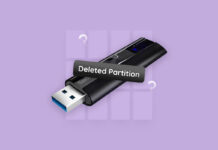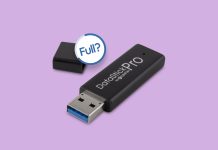
When your USB drive turns RAW, you’ll encounter errors like Windows not recognizing the drive, files renamed to weird characters, or files missing entirely, among other things. Sure, you can fix a flash drive that has become RAW, but you need to first focus on recovering your files.
When you try to fix a RAW drive, you might fail to fix it or even damage it in some cases, rendering it unusable. For this reason, you should always recover the data on a RAW flash drive before applying any fixes. In this guide, we show you how you can first recover the files, and then fix your RAW flash drive.
Table of Contents
What is a RAW Flash Drive
RAW is a state of a storage device where it has either an unrecognizable, damaged, or no file system. Basically, the storage device’s file system is the root of the problem.
Following are reasons that can put your flash drive into a RAW state:
- Interruption when formatting the flash drive into a different file system because of sudden removal or power failure
- Virus or malware
- Corrupted file system
- Incompatible file system (for instance, an APFS-formatted flash drive will appear as a RAW drive on Windows)
You’ll be able to verify if your flash drive is in a raw state using the Disk Management tool in Windows. Press Win + R, type diskmgmt.msc, and press Enter to launch the Disk Management console. You’ll find your flash drive in the lower half of the console with its file system stated next to its size instead of the actual file system like FAT32.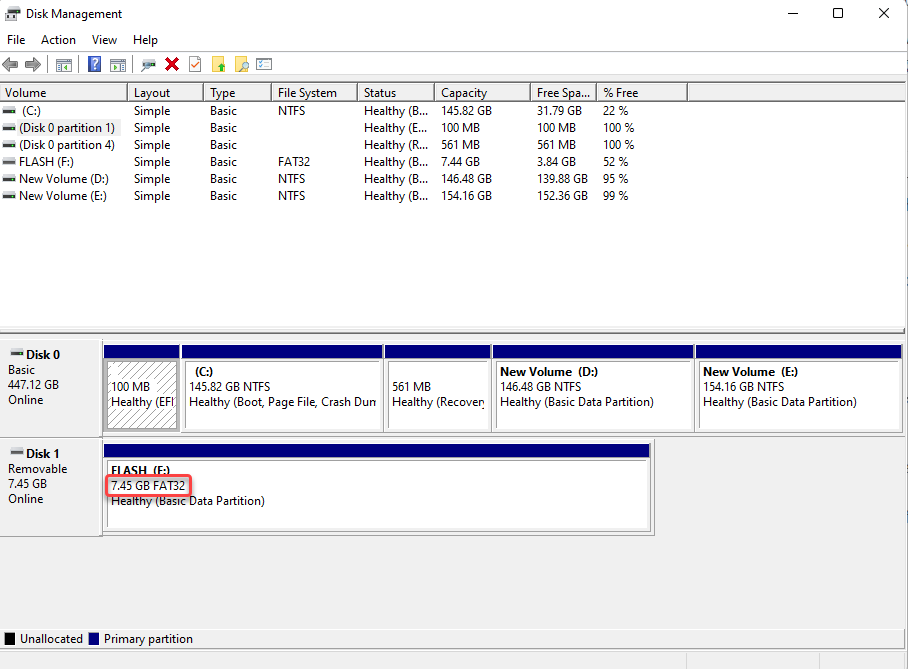
If the drive appears as RAW, you should first recover the files.
How to Recover Files from a RAW USB
The first thing you should do is recover any important files you’ve stored on your USB flash drive.
Think about it. If you try fixing the flash drive and end up damaging it, or overwriting the files, you’ll lose the existing files on your flash drive permanently. For this reason, you should only apply fixes after you’ve recovered files from the flash drive.
RAW USB drive recovery isn’t rocket science when you use a no-fuss tool like Disk Drill. Recovering files with Disk Drill is a simple, four-step process.
Step 1. Download and Install Disk Drill
Start by downloading and installing Disk Drill on your Windows computer. Download the setup file, run the installation wizard, and follow the on-screen instructions. You can recover files up to 500MB using Disk Drill’s free version.
Step 2. Select the RAW drive
Launch Disk Drill once the installation completes. Select the RAW flash drive from the app’s main screen. Click on the Search for lost data button to start the scan.
Step 3. Preview the files
Once the scan starts, you’ll be able to preview the files that the scan detects by clicking on the Review found items button. You’ll also be able to preview certain file types while the scan is still running. For instance, if you’re recovering images, you’ll be able to preview them by clicking on the eye button.
Step 4. Select and recover files
Once the scan completes, select all the files you want to recover by checking the box next to them. Click on the Recover button at the bottom after selecting the files. You’ll see a pop-up where you’ll need to choose the location for recovering the files.
Note: Choose a location different from the flash drive you’re recovering the files from to avoid overwriting the data.

Once you’ve selected a location, click Next, and you’re done.
How to Fix a RAW Flash Drive with Formatting
Once you’ve recovered the important files, formatting is an easy option for fixing a USB drive that has turned RAW. A RAW USB format can help format the flash drive into your preferred file system and fix it; you can perform a format using three utilities on Windows:
Method 1:File Explorer
- Go to the Computer (or This PC on Windows 10), right-click on the RAW format USB flash drive, and select Format.
- In the formatting utility, select the file system (if you’re not sure which one to choose, select FAT32), check the box next to Quick Format, and click Start.
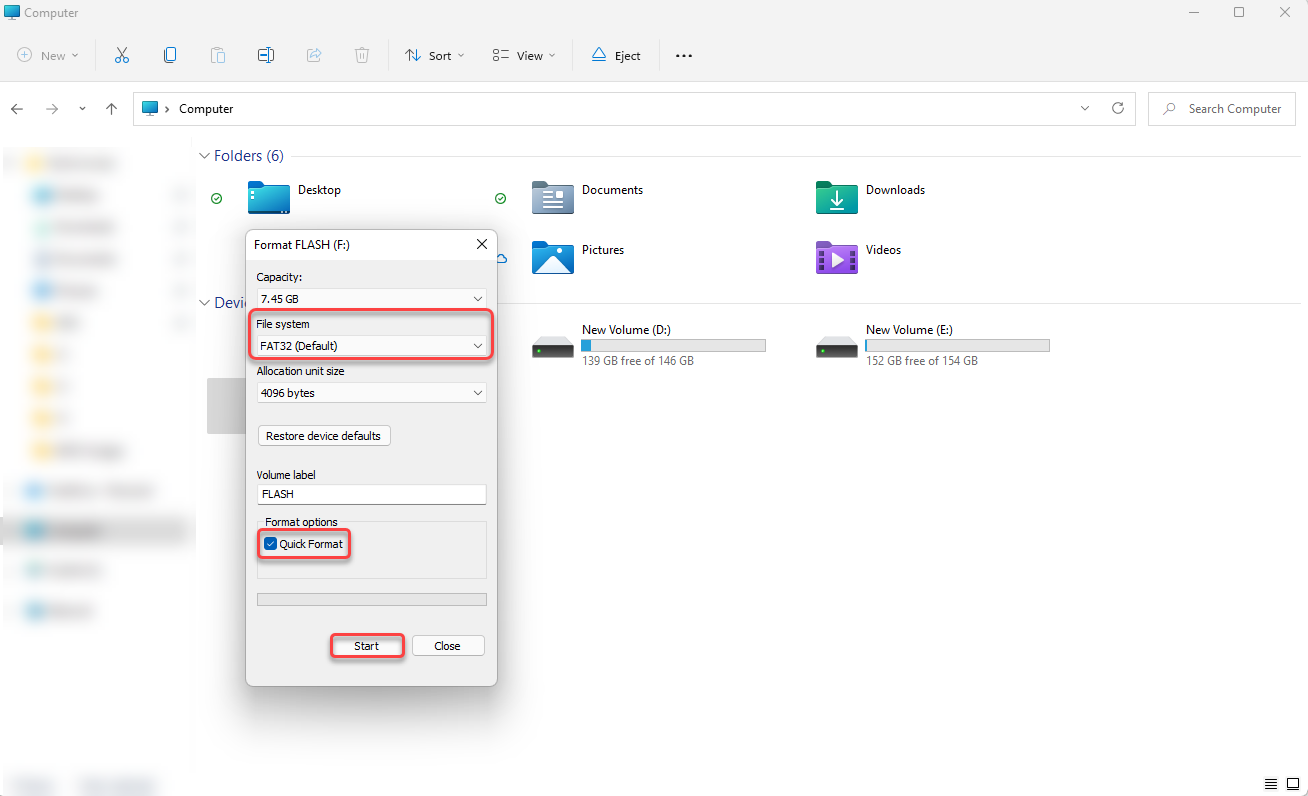
Method 2:Command Prompt
- Press Win + R, type cmd, and press Ctrl + Shift + Enter to launch an elevated Command Prompt.
- Execute the following commands one by one:
diskpart list disk
- You’ll find all disks listed. Find the RAW flash drive (looking at the disk size might help), note the disk number, and type the following command:
select disk 2
(replace the relevant disk number)
- Run the following commands one by one to delete all files on the flash drive and create a partition:
clean create partition primary
- Then, run the following commands to format the flash drive and assign a drive letter:
format fs=fat32 assign
(replace the value after “fs=” with your preferred filesystem)
Method 3:Disk Management
- Right-click on the RAW USB flash drive in the Disk Management console and select Format.
- When the dialog box pops up, select your preferred file system, check the box next to Perform a quick format, and click OK.
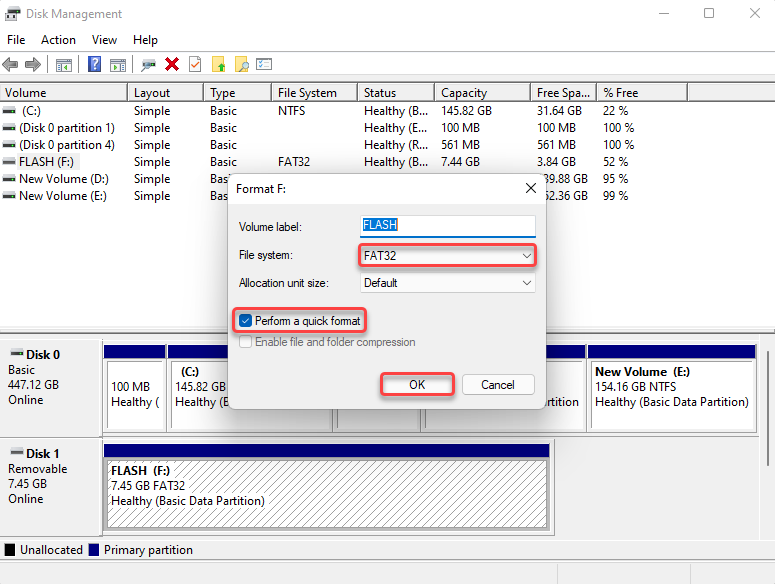
Is It Possible to Fix a RAW Flash Drive Using the Chkdsk Command?
Chkdsk (Check Disk) is a command-line utility that checks a drive for file system integrity and automatically fixes any violations that it finds. There are two ways to use the Chkdsk utility on Windows: from the Command Prompt and file explorer. However, neither of these methods will work for a RAW drive.
If you try the Command Prompt method, you’ll get this message:

If you attempt the file explorer method, you’ll encounter an error with a message that reads “The disk check could not be performed because the disk is not formatted. Would you like to format the disk?”
Therefore, the only solution for fixing a RAW USB drive is to format it as described in the previous section.
